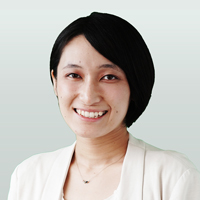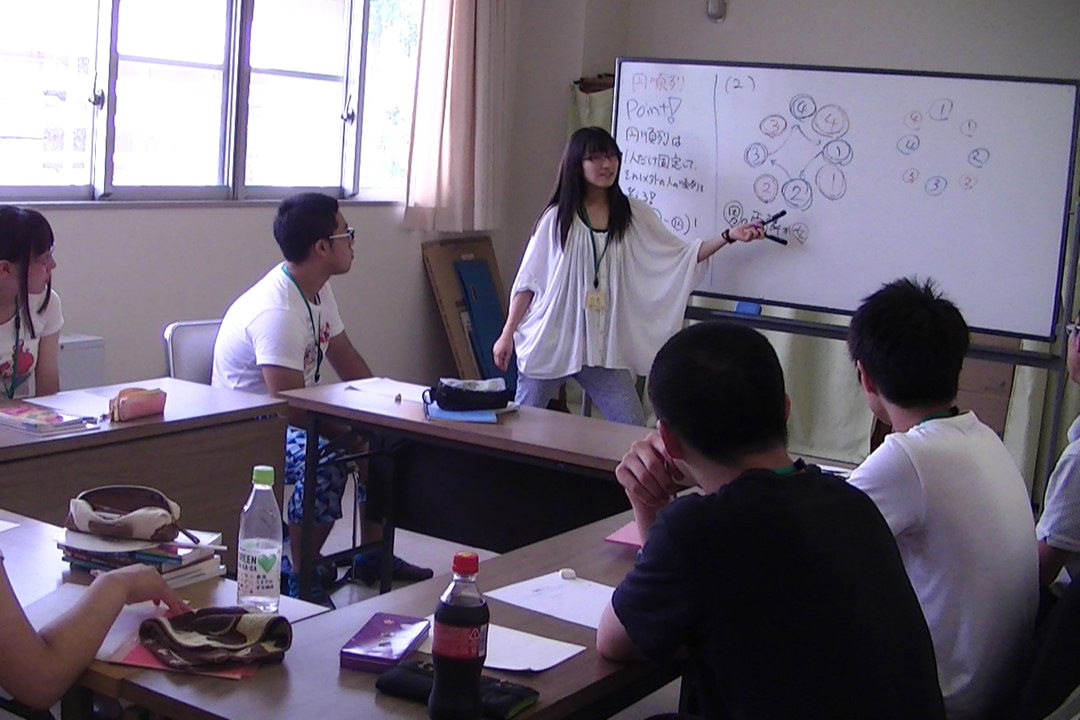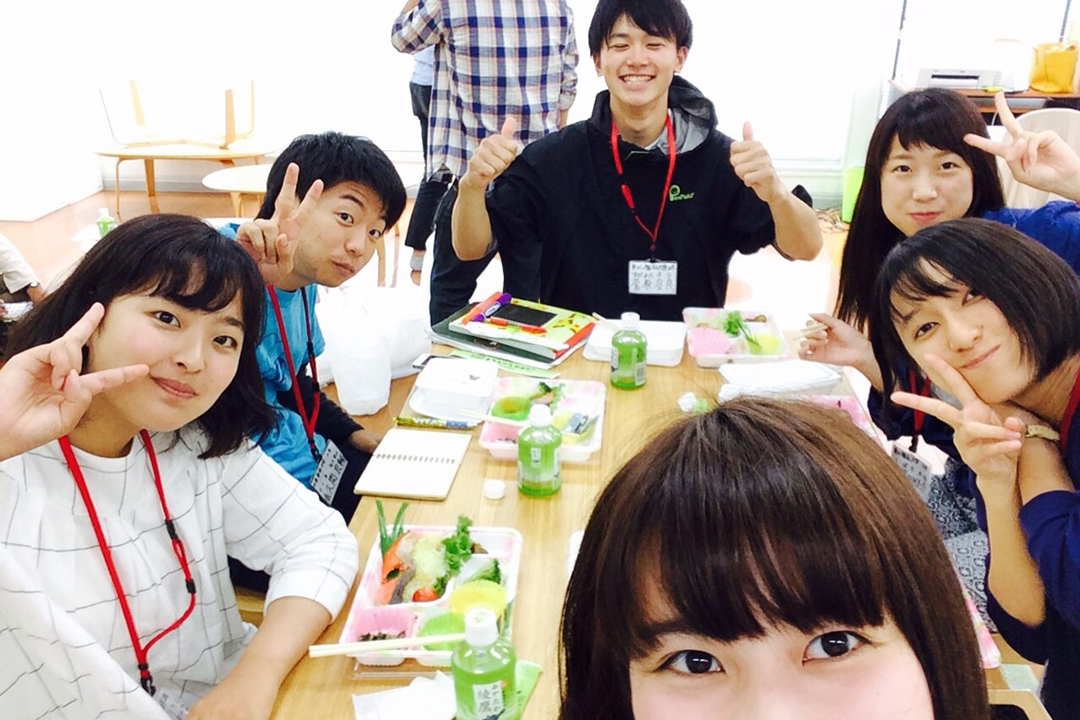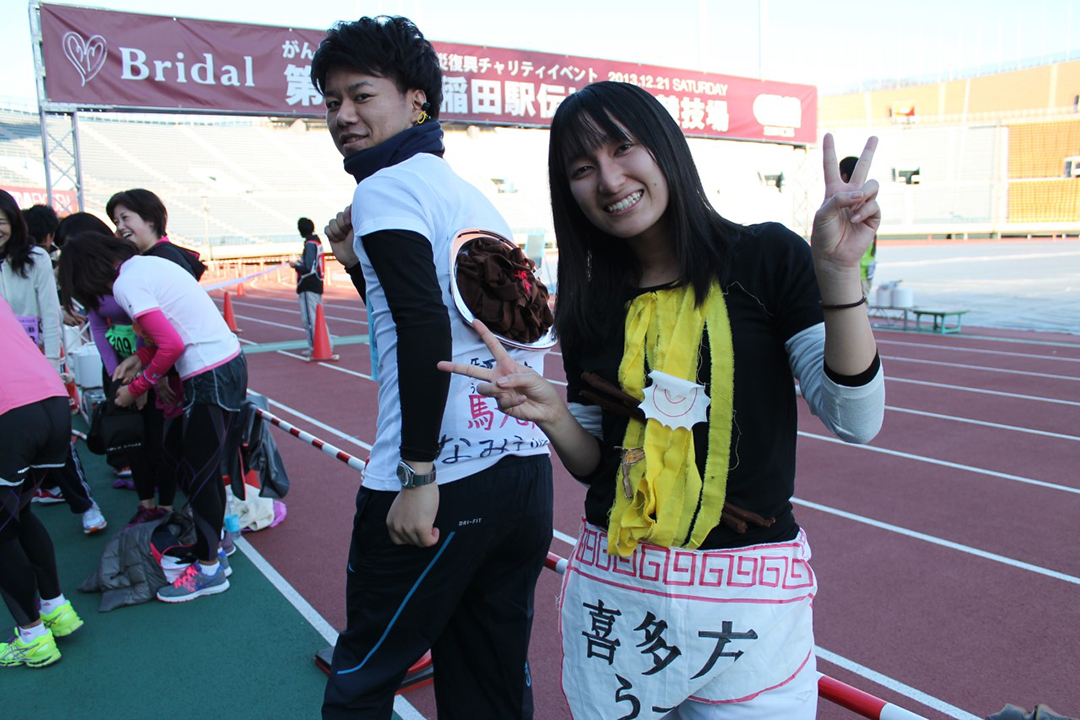How working with WAVOC broadened my outlook
The Waseda University Hirayama Ikuo Volunteer Center (WAVOC) has been continuously dispatching student and faculty volunteers to Fukushima since April 2011, just after the Great East Japan Earthquake. Aya Tamogami, a member of the Community Aids Project (CAP), one of WAVOC’s official projects, decided to provide learning support to Fukushima Prefectural Futaba High School* students who were forced to live as evacuees. There, she met a high school student who had suffered unwarranted discrimination, and who bore deep emotional scars. As we approach the 10th anniversary of the nuclear accident, we asked Aya, who has been involved in post-disaster recovery support, having experienced disaster herself, to speak frankly about her efforts up to now and what she has learned through her activities.

- Aya Tamogami
- Company employee
- Born in Koriyama City, Fukushima Prefecture, Aya Tamogami graduated from Waseda University’s School of Political Science and Economics in 2017. During her studies, she participated in official projects of the Hirayama Ikuo Volunteer Center (WAVOC). The group provides study support activities for students attending Fukushima Prefectural Futaba High School* who were forced to live as evacuees due to the accident at the Fukushima Daiichi Nuclear Power Plant, and psychological care for students traumatized by the disaster. Drawing on her own experience as a victim of the disaster and her knowledge of volunteer activities, she produced a documentary film and PR video aimed at raising awareness for reconstruction in Fukushima, and won the Jury Prize in a PR contest sponsored by the Nippon Foundation Student Volunteer Center.
*Now integrated into Fukushima Prefectural Futaba Future School Junior & Senior High School
Attending high school while dealing with the public reaction and anxiety about the nuclear accident
Aya was a student at a high school in Koriyama City, Fukushima Prefecture, when the Great East Japan Earthquake struck. In the city, some buildings showed cracks in the bricks, and there were houses with roof tiles that had fallen off, but fortunately, her family was safe and they were not seriously affected.

“In some areas, houses were partially destroyed, and I could not help but realize the extent of the scars left by the earthquake. However, I was more concerned about the problem of the nuclear accident. An increasing number of people in the area were evacuating outside the prefecture to escape the danger of leaking radioactive materials, and I felt an insurmountable sense of anxiety about what I should rely on to survive in a situation where I could not obtain accurate information.
The unspoken slander and discrimination caused me to spend my days filled with anxiety. At the time, I was serving as a member of the executive committee for the All-Japan High School Culture Festival ‘Fukushima Cultural Festival 2011,’ and there was intense debate on the Internet about whether the festival should go ahead. Some of the comments were cruel, with statements such as ‘Fukushima is dangerous’ and ‘radiation is contagious.’ I wondered why we had to be told these things, simply because we were residents of Fukushima. The unfocused anger was also directed at politicians, who had yet to resolve the nuclear accident.
Our lives are affected by politics. As a result, I entered the School of Political Science and Economics at Waseda University, wanting to build a better society and support the recovery effort myself, rather than just being influenced by politics.”
“I have to be involved in Fukushima” Going to the disaster-stricken area with a rising sense of purpose
After entering Waseda University, Aya participated in the Spring Volunteer Fair held by Waseda University’s Hirayama Ikuo Volunteer Center (WAVOC). Each volunteer project set up a booth to recruit members, and Aya chose the Community Aids Project (CAP), which provides support to high school students at Fukushima Prefectural Futaba High School.
“I chose my clubs at university from two perspectives. The first was from a macro perspective, taking into account the mechanism and structure of society as a whole. The other is a micro perspective, examining the voices and lives of individuals. To link one’s own interests and concerns to the support and reconstruction of the disaster area, it is necessary to strike a balance between the two. I participated in the volunteer fair thinking that I would acquire the former through political clubs, and the latter through volunteer activities.
From early on, WAVOC has been supporting the areas affected by the Great East Japan Earthquake through various projects, but the one that caught my eye was the Community Aids Project (CAP).
I was told that Futaba High School was the closest high school to the Fukushima Daiichi Nuclear Power Plant, only 3.5 km away, and that the volunteer group provided study support to students who were still living in evacuation shelters, in addition to listening to students’ concerns about the disaster. When I heard about the activities, I suddenly thought, ‘As someone who experienced the disaster as a high school student myself, I could provide a unique type of support.’ I decided to participate in the project with a sense of purpose that rose within me, thinking, ‘I have to be involved in Fukushima.’”
The urgent yet ‘silent voices’ of the high school students heard in the disaster area
The Community Aids Project (CAP) was established to provide a better learning environment for high school students forced to live as evacuees in Iwaki City, Fukushima Prefecture. As Aya spent time with high school students who attended Futaba High School, providing them with study support and psychological care, she began to hear their silent voices.

“There were many high school students whose family members worked in the nuclear power plant industry, and at the time, with the growing criticism of nuclear power, there were many high school students who were hurt by rumors and prejudice, and many who were struggling with their home environment because of the disaster. Among them was a hardworking high school girl who acted so tough in front of everyone, but who told me her true feelings, saying, ‘I don’t want to burden my parents with cram school fees, so I’m going to study hard,’ and ‘I only feel at ease when I’m interacting with my cat.’ That is also when I learned the reality behind the slogan “Ganbarou Tohoku” (Keep fighting, Tohoku”).
I want to question this distortion in society, where an innocent high school student is trapped without being able to speak up even if he or she wanted to. I felt that someone needed to communicate the struggles of high school students, which were different from the voices of disaster victims captured by the mass media, and the issues facing Fukushima, and created a video piece called This is Why I’m Going to Fukushima. Meeting the high school students and my experience with WAVOC provided a valuable opportunity that really jolted my existing value system.”
‘By following the path I believe correct, I hope to solve social issues for more people’
After Aya joined the WAVOC project, her strong sense of purpose made her want to continue working on earthquake reconstruction after graduation. However, through contact with students from Futaba High School, fellow students involved in the same project at WAVOC, and Waseda University, a place of learning that recognizes diversity, she realized that there is more than one way to look at things.

“The Great East Japan Earthquake took something from us that is irreplaceable. After the earthquake, I felt that something important was missing from Fukushima, and I thought that after I graduated from university, I would return to Fukushima and make up for that ‘something.’ However, when I became engaged in WAVOC activities and became deeply involved with the local people, I realized that many of the local people do not have a sense of ‘lacking’ something any longer; rather, they are leading their new lives resolutely. At the same time, I became acutely aware that I had been so caught up in ‘earthquake reconstruction’ that I had narrowed my own sense of values and possibilities. At present, I would like to focus on society at large, rather than being limited to Fukushima, and work to solve issues faced by many people.
I do not know if this choice is right or wrong. However, if you do not believe that you are right and work through it, nothing will change and nothing will be gained. Now, I believe in what I accomplished at WAVOC and what I learned on site, and I am involved in solving problems for companies using the perspective of digital marketing. In the future, I want to improve my skills as a businessperson, and create products and services that can help more people, and return value to society.”

